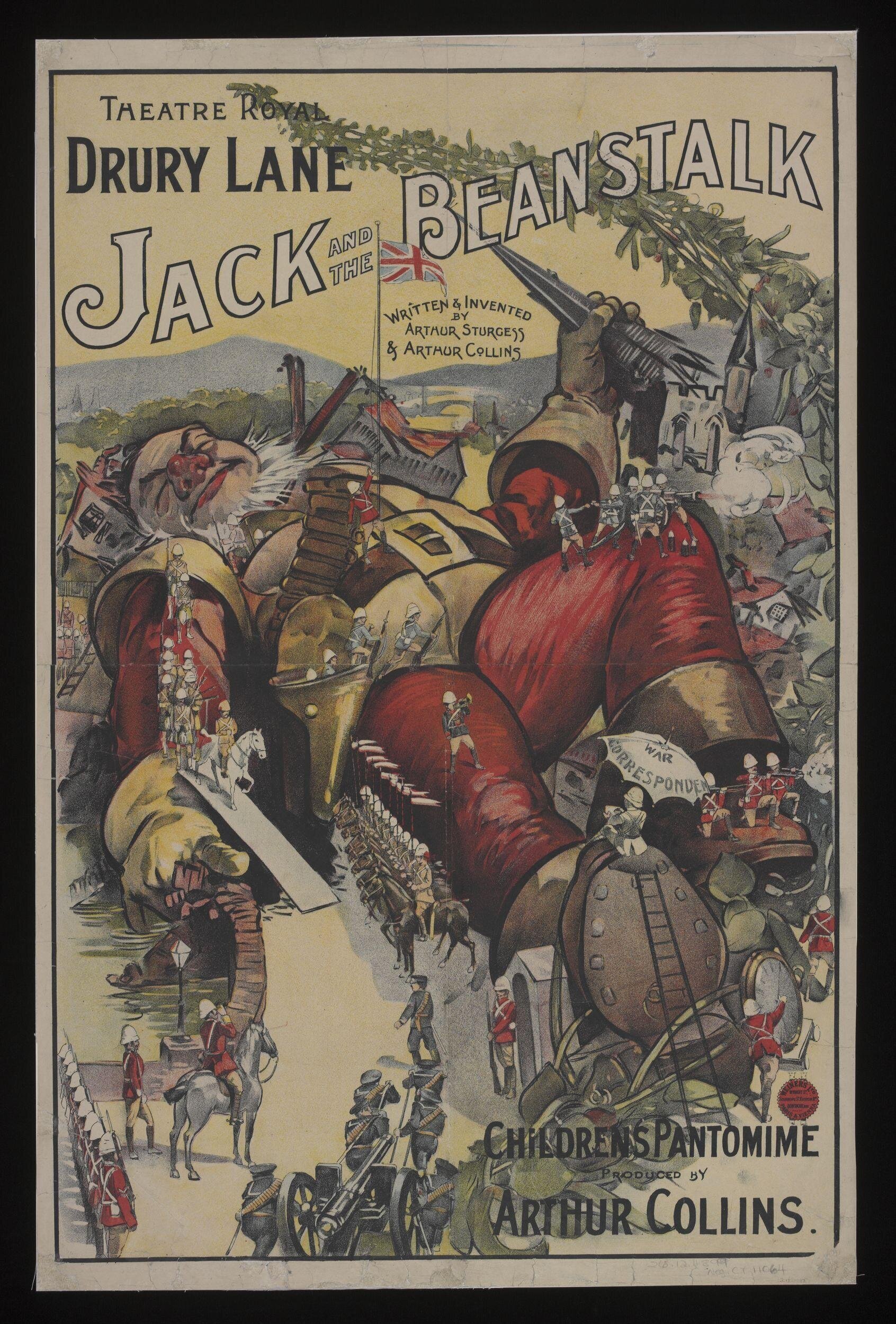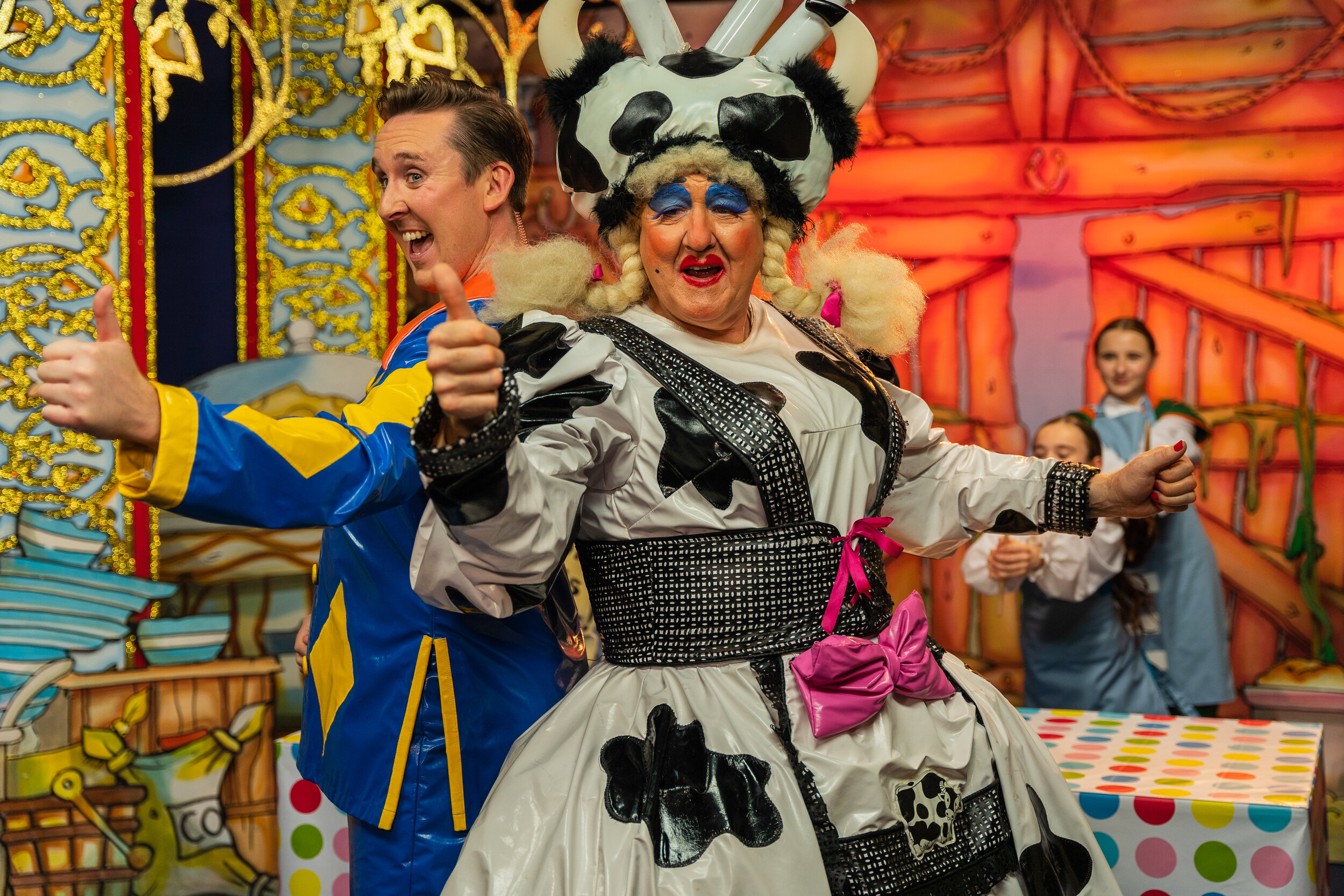For us, panto is all about family and it’s all about children. It was our own experiences of watching or being in pantos as children which shaped our desire and passion to work in the world of theatre and pantomime. That’s why we work so hard to create as many opportunities for children to perform in our productions as we possibly can.
But for now, whilst our shows are still planned to run as normal, COVID has sadly put a pause on children appearing in many of our shows, and we wanted to explain why.
Throughout the pandemic, everyone’s focus has been on health and wellbeing, and as we move into what we all hope are the latter stages of this crisis, that doesn’t change. Our absolute priority is the wellbeing and health of everyone who will work on, be involved in, or watch any of our productions this year.
A huge amount of work is going on behind the scenes to deliver a spectacular pantomime season this Christmas, but as we are sure you will appreciate, there will be some amendments and changes which must take place due to the current situation.
A very wise dance teacher friend of ours once said to us “never dance on an injury until it has fully healed.” We see COVID as a very similar thing – we can’t just ‘flick a switch’ and this will all go away. There are aspects of our pantomimes which can and will be back this year, but other parts require a little more ‘healing’ time until they can safely return, and our junior ensemble is one of those.
Pantomimes take many months to plan and develop. It takes around 17-months from the start of planning a show until closing night, and each element of the production is meticulously planned. This includes the casting and inclusion of children for our junior ensembles.
The pre-planning and up-front work that takes place before the audition days is enormous. We must plan rehearsal and performance schedules (including working out school time missed), undertake the interviewing, recruitment, and reference checking of chaperones, planning of performance licenses, obtaining DBS and PVG checks, updating safeguarding procedures and policies and then the administration set up and roll out of the actual audition days themselves.
Every year, we audition many thousands of children the length and breadth of the UK. Of these, many hundreds are offered the chance to appear in one of our productions. We also work with dozens of chaperones, all of whom take care and responsibility for these talented young people. The children appear in teams of either eight or ten in each production (some shows have 2 teams, some have 3, meaning we cast between 16 and 30 children per production), accompanied by at least two chaperones.
Once the auditions are completed, this is then followed by weeks and weeks of work in obtaining performance licenses for those who have been successful (as every child appearing in the show must be granted a license by their local council to perform), the fitting of costumes and all the background work we have to undertake, including preparing chaperone files, reports and so much more.
This year, in addition to all our usual preparations, things are just that bit more complicated. There are so many elements we must consider what would never usually factor. For example
What are the rules and regulations we would need to follow at audition days? Sometimes with all the auditionees and adults accompanying them, plus the Imagine and venue teams we can have upwards of 500+ people present in the audition buildings at any one time. Whilst unlocking is moving forwards well, this is still a huge amount of people to hold in one place, especially as some parts of the UK (Scotland and Wales in particular) may only just have fully unlocked when their auditions are due to take place.
Will we be able to even obtain licenses for children to be released from school for rehearsals and performances when they have missed so much schooling due to the pandemic? Some children may have missed weeks of schooling and the authorities may take the decision not to issue licenses to allow them to miss school for rehearsals and performances.
Will children still be in bubbles at school? How do we bubble our junior ensembles when they all potentially come from different schools and different year groups? Current indications are that the bubbles may be removed, but not for all parts of the UK and we still await full guidance.
How long will the licenses take to obtain when so many council staff are working from home or are only just returning into offices? (We have been warned it may take up to 4 weeks longer than usual in some locations, making it impossible to have them granted in time.)
Will there still need to be social distancing backstage? Or even if the rules state not, will we opt to keep it in place? Many theatres have extremely limited dressing room space with cramped backstage corridors and tight stage wing areas. As such it would be challenging to socially distance or sensibly separate the casts, crew and junior ensembles. The junior ensembles tend to share one dressing room, making social distancing impossible.
The children will be mixing with potentially thousands of other children every day at school, and at the time of writing this, schools have been where the virus is spreading the most. Without any government backed cancellation insurances, should one of the children pick up COVID at school, and come to the theatre, this would impact on others within the production and may affect the running of the production. Whilst we know that fully vaccinated adults almost certainly won’t have to isolate, there is currently no clarity around potential vaccinations for children, how isolation might work for them, what the rules are moving forward and how all of that might affect the show.
As part of our risk management, we have to consider the production as a whole from a health and safety and financial perspective. At present there is no clarity around a government backed cancellation insurance scheme to enable productions to continue should any performer or worker have to leave at short notice due to either a positive test or being requested to self-isolate. Therefore, our priority has to be to keep the production itself up and running, minimising risks to backstage staff and performers by keeping the number of people working on the show to an absolute minimum.
Finally, we have to consider ‘costume sharing’. Whilst children have all their own underwear for the show, they do share their main costumes. With the current situation, we have to consider this and the impact of it.
Our problem is that we can only work with the information we have at any one time. At the time of writing this blog (early August 2021) whilst theatres in England are reopen at full capacity and we are also starting to see reopening’s in Wales and Scotland there are still so many unanswered questions, and we have to make certain decisions now. So, in short, what that means is time has run out. We just don’t know what the rules and regulations we’re going to be working with are, and how to safely get children into the show. Therefore, it’s impossible to prepare and be ready in time.
Bearing this in mind, and after lengthy discussion and careful consideration with theatre managements, we’ve had no option but to make the heart-breaking decision not to feature young performers in many of our 2021 Imagine Theatre pantomimes. It’s not a decision we’ve taken lightly, and one which is playing very heavily on our hearts and minds.
We are so sorry, as we understand the impact that this will have and how many disappointed children there will be this year.
We promise that, as soon as things get back to ‘normal’, children will return to our shows. We can’t wait to see lots of smiling, excited faces at our next set of junior ensemble auditions. Watch this space!
With very best wishes,
Sarah and Steve Boden
Imagine Theatre
















































